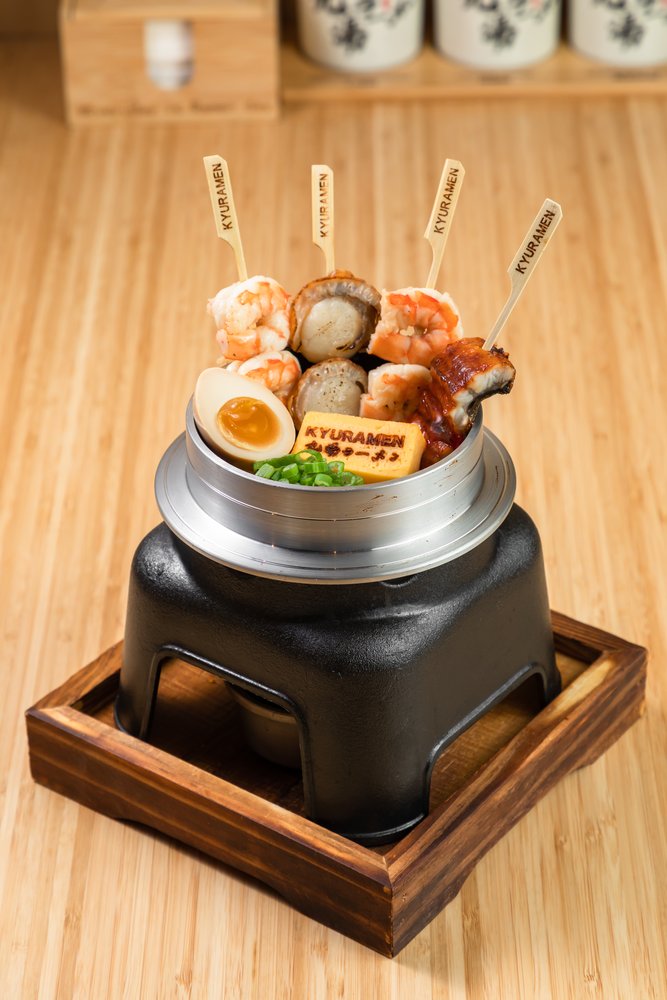Seafood Kamameshi
| Serves | 1 |
|---|---|
| Ingredients | Seafood, Rice |
| Menu Part | Appetizer/Small Plate |
| Cuisine Type | Asian |

Source: Recipe courtesy of Kyuramen
Kamameshi is a traditional Japanese comfort food based on rice cooked in an iron pot. It can be a communal, family-style dish, or as in this recipe from ramen restaurant chain Kyuramen, made for single servings, perfect for solo diners.
Ingredients
1 cup Japanese short-grain rice
1 1/2 cups water
2 Tbsps. eel sauce (unagi no tare)
4 shrimp, peeled and deveined
4 scallops
4 small pieces of eel (unagi)
1 Tbsp. vegetable oil
1/2 cup dashi broth
1 tsp. soy sauce
1 tsp. sake (optional)
Furikake (seasoned nori flakes)
1 tamago (sweet omelet) sliced
1 marinated egg, halved
Diced scallion, for garnish
Sterno or portable stove for heating
Steps
1. Prepare the seafood: Heat the dashi broth with soy sauce, mirin and sake in a small pot. Once boiling, add shrimp and scallops, and cook until they are just done, about 2-3 minutes. Remove seafood from broth and set aside.
2. Skewer the cooked shrimp, scallops and eel separately. Set aside.
3. Cook the rice: Rinse the rice until water runs clear. Drain and place in a rice cooker or pot with 1 1/2 cups of water. Cook according to rice cooker instructions or bring to a boil, then reduce heat, cover and simmer for about 15 minutes until the water is absorbed and the rice is cooked.
4. Prepare the kamameshi base: In a kamameshi pot or small clay pot, add the rice mixed with eel sauce. Sprinkle furikake evenly over the rice.
5. Cook the kamameshi: Light the Sterno or portable stove beneath the pot to gently heat the rice and form a crispy layer at the bottom. Heat for about 10-15 minutes or until a crust forms.
6. Add toppings and serve: After the crust forms, turn off the heat. Arrange the shrimp skewer, eel skewer, half marinated egg and tamago egg (sweet omelet) on top of the rice. Garnish with diced scallion and serve.
Tips
Serve the kamameshi hot, allowing each guest to mix in the toppings and enjoy the crispy rice from the bottom of the pot.